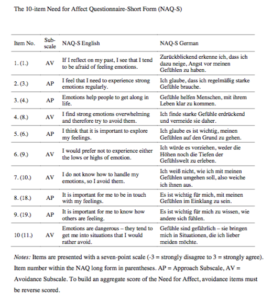 Image Credit: Quickmeme
Image Credit: Quickmeme
This post covers the concept of Need for Affect and how it can be used to improve and influence User Experience. Specifically, I will be focusing on how this concept can be applied to video game design.
Affect
Before getting into the concept of Need for Affect, it is important to first define affect. Fiske and Taylor, describe affect as the overarching term that refers to the range of preferences, evaluations, moods, and emotions that people experience (1990):
Preferences are simple reactions are either pleasant or unpleasant.
Evaluations are attitudes we have about people and objects.
Moods are more vague emotions that aren’t focused on one specific target, like preferences they are generally regarded as being either pleasant or unpleasant.
Emotions are the distinct, nuanced feelings we experience. Emotions are not just categorized as positive or negative, they are sometimes considered both and can vary in the length of time they are experienced.
Keeping these components in mind, it is also important to note that affective experiences can vary in their intensity, valence (positive/negative), quality, stability, specificity, and clarity (Maio & Esses, 2001).
Need for Affect
Need for Affect (NFA) is conceptualized as the extent to which people are motivated to approach and/or avoid a variety of affective experiences. This conceptualization, put forth by Gregory Maio and Victoria Esses, assumes there are two basic features of NFA (2001):
- There are meaningful, individual differences in the extent to which affective experiences are pursued
- There is a difference between the motivation to approach emotions and to avoid emotions (ex. motivation strength and effects vary between the two)
NFA is measured using a questionnaire, of which there are 2 versions. There is the original NFA Questionnaire which contains 26 items (Maio & Esses, 2001) and the shortened 10-item version (Pictured below in Figure 1; Appel, Gnambs, & Maio, 2012).
 Figure 1: Need for Affect 10-item Scale (Appel et al., 2012)
Figure 1: Need for Affect 10-item Scale (Appel et al., 2012)
Questionnaire scores indicating low NFA can be interpreted as an individual being high in their motivation to avoid emotions and low in their motivation to approach emotions. Thus, scores that indicate high NFA are interpreted as a low motivation to avoid emotion and a high motivation to approach emotion.
General Findings
- NFA is positively correlated with the personality traits openness to experience, extraversion, and agreeableness (Appel et al., 2012)
- Individuals who are high in NFA are more willing to seek-out and engage with emotional content/experiences (Appel et al., 2001; Maio & Esses, 2001)
- High NFA suggests that an individual prefers and is more easily persuaded by messages that emphasize affective information (Appel et al., 2001; Haddock, Maio, Arnold, & Huskinson, 2008)
- High NFA individuals are more likely to allow their own emotions to influence their behaviors and attitudes (Maio & Esses, 2001)
NFA and Design
By understanding NFA and how it is measured, UX researchers and designers could discern users’ general NFA preferences and integrate those findings into products/interfaces. One domain where this concept can be easily demonstrated is video games. If we know that our users regularly choose emotional story lines over achievement/skill-based ones, we can assume that our users have a higher NFA. Knowing this, we can improve new iterations of the game by including more affective content for them to engage with and enjoy. Below I have included 3 different games which have done well to demonstrate how affective content bolsters game quality and heavily influences the user experience.
Firewatch
“Even better than presenting its dangers, Firewatch presents the threat of danger. This is no feel-good summer beach read; this is a brutally beautiful and fragile story of people running from their problems—and problems running away from any tidy conclusions. This is the video game equivalent of a page turner, and adventure games have rarely been in finer form.” — Gaming Nexus, Game Review by Randy Kalista
The Last of Us
“The Last of Us seamlessly intertwines satisfying, choice-based gameplay with a stellar narrative. It never slows down, it never lets up, and frankly, it never disappoints. … In the time it took me to beat The Last of Us, I came to care about Joel, and I became invested in his story, and the stories of those he meets along the way.” — IGN Review
Journey
“Journey’s visual and sound design sets new standards for interactive entertainment. This alone makes it an extraordinary work, but it’s the way that these aesthetic elements come together with beautifully subtle direction and storytelling to create a lasting emotional effect that elevates this to one of the very best games of our time.” — The Guardian, Games Review by Keza MacDonald
What these games demonstrate is that with effective emotional content game features like play difficulty, realism, and in the case of Journey, even dialog become unimportant to the user’s experience and engagement with the game. Video games are just one area where user NFA can be highly influential and I hope this post has given you some ideas about how this concept could be more widely applied when designing for UX.
References:
Appel, M., Gnambs, T., & Maio, G. R. (2012). A short measure of the need for affect. Journal of Personality Assessment, 94(4), 418-426.
Fiske, S. T., & Taylor, S. E. (2013). Social cognition: From brains to culture. Sage.
Haddock, G., Maio, G. R., Arnold, K., & Huskinson, T. (2008). Should persuasion be affective or cognitive? The moderating effects of need for affect and need for cognition. Personality and Social Psychology Bulletin, 34(6), 769-778.
Maio, G. R., & Esses, V. M. (2001). The need for affect: Individual differences in the motivation to approach or avoid emotions. Journal of personality, 69(4), 583-614.


